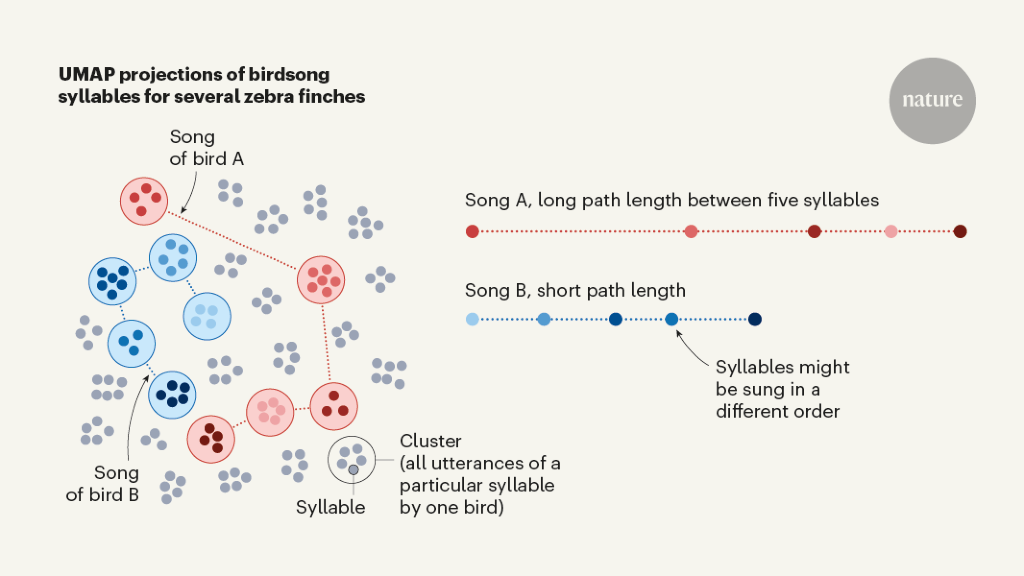Temel Kavramlar
Bird songs are more complex than basic metrics can measure, requiring innovative computational tools for accurate analysis.
Özet
The content delves into the challenges researchers face in quantifying bird songs to comprehend bird evolution and behavior. Traditional methods like pitch, duration, and loudness fall short in capturing the intricacies of these sounds and understanding what aspects birds find attractive. Alam et al. propose a comprehensive approach using advanced computational tools to measure songs effectively. They also provide behavioral evidence supporting the idea that their metric can capture variations meaningful to the intended audience of bird songs - other birds.
Key Highlights:
Researchers struggle to quantify bird songs for evolutionary and behavioral studies.
Traditional metrics like pitch, duration, and loudness are insufficient in capturing song intricacies.
Alam et al. introduce a holistic method using computational tools for accurate song measurement.
The proposed metric is suggested to capture variations relevant to other birds listening to the songs.
Birds convey complex signals in simple songs
İstatistikler
Alam et al. propose a holistic method of measuring song using innovative computational tools.
Furthermore, the authors present behavioral evidence that suggests their metric can capture variation that is meaningful to the intended listeners of songs — other birds.
Alıntılar
Önemli Bilgiler Şuradan Elde Edildi
by Kate T. Snyd... : www.nature.com 03-20-2024
https://www.nature.com/articles/d41586-024-00677-6
Daha Derin Sorular
How do different species of birds perceive and interpret complex songs?
Different species of birds perceive and interpret complex songs in various ways based on their evolutionary history, ecological niche, and social structure. For example, some bird species use song to establish territories, attract mates, or communicate with offspring. The complexity of a song can convey information about the singer's fitness, genetic quality, or territory size. Birds may also use subtle variations in pitch, rhythm, or tempo to convey specific messages to other individuals within their species.
What implications could this new method of song measurement have on conservation efforts for endangered bird species?
The new method of measuring bird songs proposed by Alam et al. could have significant implications for conservation efforts for endangered bird species. By providing a more holistic understanding of the intricacies of avian communication, researchers can better assess the health and viability of populations through vocalizations. This method could help identify key factors influencing breeding success, habitat quality, or population dynamics that are crucial for effective conservation strategies.
Furthermore, by capturing variation meaningful to intended listeners (other birds), this metric can aid in monitoring changes in behavior due to environmental disturbances or human activities. Conservationists can then tailor management practices to mitigate threats such as habitat loss, climate change impacts on vocalization patterns.
How might advancements in technology further enhance our understanding of avian communication?
Advancements in technology offer exciting opportunities to enhance our understanding of avian communication beyond traditional methods like field observations and acoustic recordings alone. For instance:
Bioacoustic Monitoring: Automated sound recognition software can process large amounts of audio data quickly and accurately detect specific vocalizations from multiple individuals simultaneously.
Genomic Tools: DNA sequencing technologies allow researchers to investigate the genetic basis underlying differences in song complexity among bird populations.
Neuroimaging Techniques: Studying brain activity during listening tasks using neuroimaging tools provides insights into how birds process auditory information at a neural level.
Machine Learning Algorithms: These algorithms can analyze vast datasets containing intricate features present in bird songs that may not be apparent through manual analysis alone.
By integrating these technological advancements with behavioral studies and ecological research methodologies effectively capture the nuances involved in avian communication processes across diverse habitats and conditions while informing conservation actions tailored towards protecting vulnerable bird populations more efficiently than ever before
0
